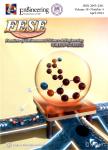Dynamic simulation of urban water metabolism under water environmental carrying capacity restrictions
Dynamic simulation of urban water metabolism under water environmental carrying capacity restrictions作者机构:State Key Laboratory of Water Environmental Simulation School of Environment Beijing Normal University Beijing 100875 China School of Environment Beijing Normal University Beijing 100875 China
出 版 物:《Frontiers of Environmental Science & Engineering》 (环境科学与工程前沿(英文))
年 卷 期:2016年第10卷第1期
页 面:114-128页
核心收录:
学科分类:12[管理学] 1204[管理学-公共管理] 083305[工学-城乡生态环境与基础设施规划] 08[工学] 0833[工学-城乡规划学] 0834[工学-风景园林学(可授工学、农学学位)]
基 金:supported by the Twelfth Five-Year- Plan for the National Major Science and Technology Program
主 题:urban water metabolism system (UWMS),system dynamic simulation water environmental carryingcapacity (WECC) feedback loops bilateral control
摘 要:A revised concept for urban water metabolism (UWM) is presented in this study to address the inadequacies in current research on UWM and the problems associated with the traditional urban water metabolic process. Feedback loops can be analyzed to increase the water environmental carrying capacity (WECC) of the new urban water metabolism system (UWMS) over that of a traditional UWMS. An analysis of the feedback loops of an UWMS was used to construct a system dynamics (SD) model for the system under a WECC restriction. Water metabolic processes were simulated for different scenarios using the Tongzhou District in Beijing as an example. The results for the newly developed UWM case showed that a water environment of Tongzhou District could support a population of 1.1926 × 106, an irrigation area of 375.521 km2, a livestock of 0.7732 × 106, and an industrial value added of ¥193.14 × 109 (i.e. about US$28.285 × 109) in 2020. A sensitivity analysis showed that the WECC could be improved to some extent by constructing new sewage treatment facilities or by expanding the current sewage treatment facilities, using reclaimed water and improving the water circulation system.



